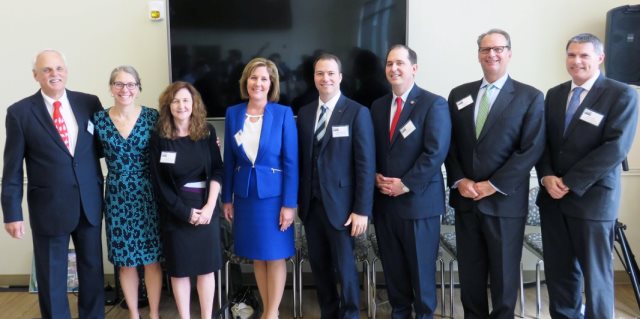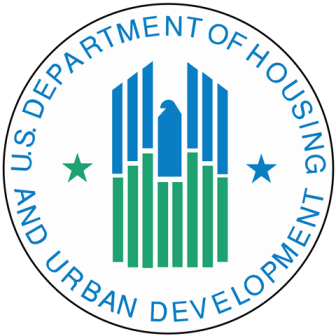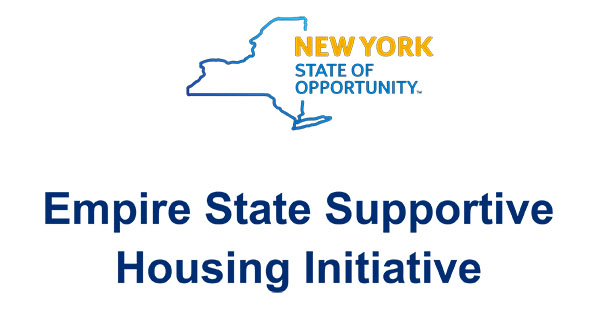

Showing Posts by Date: 05/2018
05.18.2018

Friends, champions and elected officials gathered on Friday May 11 to celebrate the opening of Lynn’s Place, the first supportive and affordable housing building developed by Unique People Services (UPS) in the south Bronx. Named after UPS’ founder Lynn Wonsang, the six-story complex consists of 69 units, 42 of which are supportive housing.
"Looking in front of me, I see the fruit of nearly three decades of dreaming. Dreaming that grew into a clear vision with amazing champions---- and we’d like to say thank you for your passion for our vision in making Lynn’s Place a reality," remarked Yvette B. Andre, the Executive Director of UPS at the opening ceremony.
Yvette B. Andre was joined by Ann Sullivan, Commissioner of NYS Office of Mental Health (OMH); Melissa Mark-Viverito, former NYC City Council Speaker; Assembly Member Michael Blake, NYC HPD Assistant Commissioner Emily Lehman, Hudson Housing Capital’s Sam Ganeshan; Corporation for Supportive Housing’s Kristin Miller, as well as representatives from State Senator Gustavo Rivera and City Council Members Diana Ayala and Rafael Salamanca Jr.
“Over 50% of units are dedicated to people with serious mental illnesses. This opens up their dreams,” said Commissioner Sullivan.
Melissa Mark-Viverto, who represented the neighborhood when the project broke ground, congratulated all the partners and spoke about the importance of investing tax dollars in housing for those in need.
“It is projects like this that give you faith that government is here to serve the most vulnerable. Proud that as speaker of the City Council we invested in such a worthy project,” she said.
Two of Lynn’s Place residents, Ms. Ivory and Mr. Digilio also spoke at the ceremony, expressing their gratitude for having Lynn’s Place as their new home.
“It is really hard to be homeless, especially when you’re older. I’m just really grateful to be in a place where people can see me as a person - not as someone with an illness, but just as me,” shared Ms. Ivory.
The building features a community room, a large sunken courtyard for recreational use, and a beautifully landscaped rooftop. Comprehensive on-site social services are funded by NYS Office of Mental Health (OMH).
This project was funded through the NYC Department of Housing Preservation and Development (HPD), the Community Preservation Corporation (CPC), CSH, Hudson Housing Capital, Capital One Bank, Deutsche Bank, New York City Council and NYSERDA.
The building is designed by Urban Architectural Initiatives and Procida Construction Corporation was the contractor for the project. Robert Sanborn Development was the developer.
05.17.2018

NYS Homes and Community Renewal (HCR) has announced its 2017 Unified Funding Awards. Sixteen projects include 388 units of supportive housing that have services and operating awards through the Empire State Supportive Housing Initiative. Twelve of these projects are being developed by members of the Network.
Congratulations to all of our members receiving funding in this round!
| Funding, New York State05.11.2018

DePaul celebrated the opening of its brand new affordable/supportive housing development, Packet Boat Landing Apartments on Thursday, May 3, 2018 in Lockport, New York.
The three-story, 21,500 square-foot apartment building is named after a type of small cargo and passenger ship called ‘packet boats’ that were used on the Erie and Barge Canals during the 18th and 19th centuries. The building offers 60 one-bedroom units, 21 of which are reserved for supportive housing tenants.
DePaul President Mark Fuller was joined by NYS Senator Robert Ortt, NYS Assembly Member Michael Norris, NYS Home and Community Renewal (HCR) Commissioner and CEO RuthAnne Visnauskas; Lockport Mayor Anne McCaffrey; as well as dignitaries representing NYS Office of Mental Health (OMH), Niagara County’s Department of Mental Health and Substance Abuse Services, and Region’s Bank.
"Packet Boat Landing delivers the mix of affordability and supportive services that are essential in our fight against homelessness, and our ability to ensure that all New Yorkers can access the opportunity created by our growing economy. Under Governor Cuomo's leadership, we are creating and preserving integrated, safe and affordable homes in communities just like Lockport that help strengthen local economies," said New York State Homes and Community Renewal Commissioner RuthAnne Visnauskas at the opening ceremony.
DePaul President Mark Fuller thanked all the partners that helped fund and support this project, and expressed his love for the building.
"We've built about 60 different buildings and this is one of my all- time favorites," he said.
Senator Ortt noted the importance of supportive housing for helping veterans and others coping with disabilities while Mayor McCaffrey commended DePaul for providing new low-income housing in the city.
Packet Boat Apartments features a spacious community room, lounges throughout the complex and a computer lab. It also offers exercise equipment as well as outdoor seating. Comprehensive on-site tenant support services are funded by the Office of Mental Health.
The Packet Boat Landing Apartments received funding through NYS Housing Financing Agency tax-exempt bonds. Subsidies were provided by NYS HCR in addition to Low Income Housing Tax Credits, OMH loans and grants, and a grant from New York State Energy Research and Development Agency (NYSERDA). The building was designed by SWBR Architects and Calamar was the contractor for the project.
| Openings05.03.2018

HUD Secretary Ben Carson’s legislative proposal, The Making Affordable Housing Work Act of 2018, includes a startling series of amendments aimed at significantly increasing the tenant rent burden under Section 8, Veterans Affairs Supportive Housing (VASH), public housing and other federal rental assistance programs. Here are some important pieces of this new proposal:
Approximately 20% of supportive housing residences in New York State use Section 8 vouchers to subsidize tenants’ rent. If this proposal becomes law, it could seriously impact the tenants and providers of supportive housing. Further, increasing the 30% standard also has a disproportionate impact on high cost of living areas such as NYC. It would cause significant destabilization of families, seniors and the disabled, pushing them deeper into poverty and increasing homelessness.
It is also important to note that there is no evidence that raising rent has any effect on helping low income people get jobs or otherwise become more independent.
Therefore, we strongly object to this proposed bill, and ask you to join us in the following actions:
If you would like to learn more about this proposed legislation, here are a few good articles.
Center on Budget and Policy Priorities: Trump Plan Would Raise Rents on Working Families, Elderly, People With Disabilities
Washington Post: HUD Secretary Ben Carson to propose raising rent for low-income Americans receiving federal housing subsidies
You could also join a webinar organized by the National Low Income Housing Coalition on May 10, at 1:00pm. Here is the link to register.
|05.03.2018

New York State has released the third-round Empire State Supportive Housing Initiative (ESSHI) Request for Proposals (RFP), due June 19th. The State is issuing this RFP to advance the five-year goal of developing more than 6,000 units of supportive housing over five years (5,000 units in NYC and 1,000 units in the rest of the state). Funding for at least 1,200 qualifying individuals will be awarded through this third-round RFP.
The eligible target populations to be served under this program are families with a qualifying individual, individuals and/or young adults who are both homeless and who are identified as having an unmet housing need as determined by the CoC or local planning entity or through other supplemental local, state and federal data, AND have one or more disabling conditions or other life challenges.
New York State will award up to $25,000 in services and operating funding annually for each qualifying individual. The support services provided should be tailored and appropriate to the specific population served. ESSHI projects are expected to follow a Housing First model.
What's New?
MRT Qualifications. MRT is no longer a separate potential target population but rather a new requirement for projects serving SMI, SUD, HIV/AIDS, Chronic Homelessness, Frail Elderly/Seniors or I/DD. Projects that have 30 or more dwelling units of which at least 15 units serve ESSHI-qualifying individuals, will be required to set aside 25% of designated ESSHI units for high-cost, high-need Medicaid users (MRT eligible individuals).
MRT Eligible Individuals Definition. The new definition for MRT eligible individuals is:
Individuals enrolled in Medicaid, or have used Medicaid in the last 12 months and are Medicaid eligible, and meet one of the following in the past 12 months:
Frail Elderly/Senior Definition. Any person who is age 55 and older, who is enrolled in Medicaid, and requires assistance with one or more actives of daily living or instrumental activities of daily living. Eligible persons are referred from a Skilled Nursing Facility, or identified as homeless by a health home, hospital, managed care organization, medical respite, managed long term care, performing provider system or shelter.
Olmstead Requirements. Integrated settings are required for any homeless population that falls under the ADA including SMI, SUD, I/DD or persons living with HIV/AIDS. Generally, mixed use projects that integrate affordable housing with supportive housing are considered integrated, provided that no more than 50% of the total units are reserved for individuals with disabilities (60% in NYC). For projects assigned to OASAS, projects that have 30 or less dwelling units do not need to comply with the above stated Olmstead requirements.
To view the RFP click here.To view the entry for ESSHI in our Funding Guide, please click here.
IMPORTANT DATES:
RFP Released: May 1, 2018
Webinar: May 15, 2018
Questions Due: May 22, 2018
Questions Posted on website (tentatively): June 5, 2018
Proposals Due: June 19, 2018
Conditional award notifications (tentatively) August 7, 2018
Questions may be submitted via mail or email to:
Carol Swiderski
Contract Management Specialist 2
ESSHI Questions
NYS Office of Mental Health
Contract and Claim Unit
44 Holland Ave, 7th floor
Albany, NY 12229
Email: Carol.swiderski@omh.ny.gov
05.03.2018
On April 24, 2018, the Committee on General Welfare, chaired by Council Member Stephen Levin, held an oversight hearing to examine the progress of the City’s new supportive housing program, NYC 15/15. The four-hour long hearing focused on the progress being made towards achieving the goal of 15,000 supportive housing units in 15 years and included testimony on Intro 147, a local law introduced by Council Member Levin, to amend the administrative code of the City of New York in relation to reporting on supportive housing placements.
City Council Speaker Corey Johnson initiated the hearing with positive remarks on the effectiveness of the supportive housing model, and his support for it.
“Supportive housing, which began in the 1970s in response to the homelessness crisis in New York City, is considered the most successful existing model for ending chronic homelessness among vulnerable populations,” he said.
He also expressed his commitment to ending homelessness and urged all those present to do everything they can to develop more supportive housing as quickly as possible. “There are homeless people everywhere, living on the streets, and it’s heartbreaking,” Johnson said.
Commissioner Steven Banks of the Human Resources Administration (HRA), Maria Torres Springer, Housing Preservation and Development (HPD), and Molly Park, Deputy Commissioner for Development at HPD were the first to testify at the hearing.
Commissioner Banks and Commissioner Torres Springer gave an update on the progress towards NYC 15/15 and discussed the issues slowing down progress. Of the 15,000 units in the plan, half are planned as scattered site supportive housing and half as part of single-site, or congregate, residences.
“Through the 15/15 plan thus far, we have made 1,426 awards to providers, including 505 scattered and 921 congregate units,” Commissioner Banks stated. “337 clients have already moved into units, 170 more are already linked to units and are in the process of moving in,” he added.
Commissioner Banks also identified the tight market for apartments at affordable rents, which have a vacancy rate of 1.15%, as one of the main reasons slowing down the pace of scattered site supportive housing.
Commissioner Torres Springer too described the long lasting benefits of supporting housing in her testimony, including the fact that for every supportive housing unit tax payers save $10,000 per year in public resources. She then turned the conversation back to the council members and asked for their help to overcome the biggest challenge facing any new supportive housing: building community support.
“We need your help in combating the misperceptions associated with homelessness and supportive housing. Communities across the city need to know that they cannot be opposed to the siting of homeless shelters and to the siting of permanent housing for formerly homeless and supportive populations that would ultimately reduce the need for shelters. One is a key solution to the other, and opposing them both gets us nowhere,” she said.
In addition to Speaker Johnson and Chair Levin, present council members included Adrienne E. Adams, Diana Ayala, Vanessa L. Gibson, Mark Gjonaj, Barry S. Grodenchik, Brad S. Lander, Antonio Reynoso, Rafael Salamanca, Jr., Ritchie J. Torres and Mark Treyger.
Most of the Council Members present voiced their eagerness to develop more supportive housing.
“First of all, as you’ve heard from the Speaker, this body is committed to assuring that we help develop as many supportive housing units as possible. So, we not only talk the talk, but we walk the walk and you’ll have great partners moving forward,” Council Member Gjonaj assured the audience.
The Network’s Executive Director, Laura Mascuch, who also serves as the Co-Chair of the New York City Coalition on the Continuum of Care (CoC), the planning body that serves to allocate HUD funding for homelessness and permanent supportive housing programs also testified at the hearing. She spoke about the recommendations from the Mayor’s Task Force on Supportive Housing, which were incorporated into NYC 15/15, significantly improving the model and ensuring its success in reducing homelessness. She also reiterated the need for support from council members in overcoming community opposition.
“Apart from the dearth of affordable appropriate land on which to build supportive housing, the single greatest impediment to developing new residences is local opposition, often based in misinformation and fear. We look to the City Council for leadership in this area,” she remarked.
The hearing concluded with Committee Chair Stephen Levin emphasizing the need to move people out of the shelter system and into supportive housing and working more diligently to ensure that all who do need supportive housing, get it.
| New York City